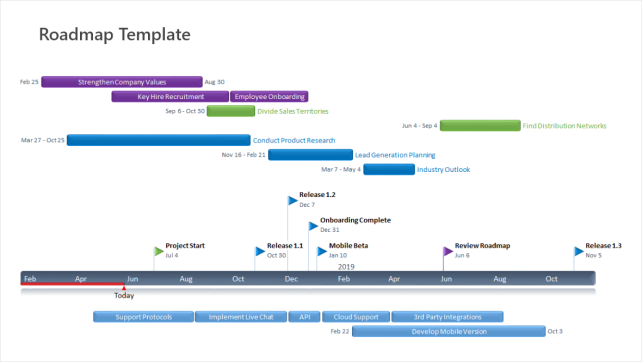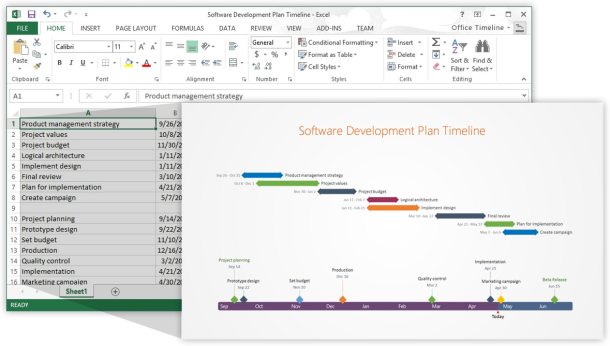
‘If you wish to persuade me, you must think my thoughts, feel my feelings, and speak my words’ Cicero, Roman orator and statesman.
The would be ‘lazy’ project manager will think very, very carefully about what they need to communicate and how they need to communicate it and why they are communicating what they are communicating.
The general guidance is that some 70-80% of a project manager’s time will be spent in communicating. That is 70-80% of their time!
So, if you play the productive lazy game at all, and you only apply it in one area of project management it makes blinding sense to do it here, in communication. This is by far the biggest activity and offers the greatest opportunity of time in the comfy chair.
Imagine if you would able to save some of that 70-80% of your time, how much more relaxed would you be?
There is, to my mind, a great book – Alpha Project Managers by Andy Crowe[1] – it talks about ‘what the top 2% know that everyone else does not’ and it certainly identifies communication as a key area that top project managers excel at.
The book, based on a survey of 5,000 project managers, states in its findings:
‘Good communication is comprised of more than how the message is delivered. The information itself, the method used, and the timing with which it is delivered all contributes to effective communication.’
Communication on a project is a two way process. You are communicating out and you are receiving communication back at you and the usual complexities of filters and noise typically confuse the process of giving and receiving clear, accurate and understandable information.
Communication is also sequential, communicated through chains of people, which will add that ‘Chinese whispers’ effect – either intentional or accidental.
Add to that the sheer volume of communication these days, email, phone calls (landline and mobile), written, presented, verbal and so on, then life can be very tough for project managers to learn what they need to learn and to share what they need to share.
I was taught a truth in my early project management days – reporting is not communicating! The fact that the critical facts and important truths are buried somewhere in a report that the right people may be in possession of does not, in any way, mean that they have received the message.
I have also learnt that to waste time and effort in ‘defensive’ and ‘offensive’ communication, typically email these days, is truly pointless and will distract the project manager from the real issues. I know building an email trail that, to put it bluntly, ‘covers your ass’ is easy to do but far better results can come from directing those same efforts in really effective communication.
Effective communication is about isolating the critical information, utilising the optimum communication method for the person (or people) that you need to communicate with, and delivering that information at the appropriate time. I would also add that to ensure that you receive the right information back to you then you need to educate people on what information you need, how you would like to receive that information and when.
Understand how communication works
Now; you can go and do your homework, you can read a book, you can attend a course, you can ‘Google‘ to your heart’s content, and you will find lots and lots and lots of information about communication[2]. I really don’t want to get too technical here but simply put, and just so that you have a basic understanding, here is a summary:
There is a source – someone/something sending out the information.
There is the medium – this is the means by which the information is sent. Maybe this is spoken or electronic (email, fax, web etc) or through the telephone, maybe it is paper based (letter, poster, memo, post-it etc), or it could be an image or visual, or a sound. It can actually be silent through a look, a smell, body language, colours, or the arrangement of text (numbers or letters).
Right then we have what is known as the receiver – someone/something that is receiving the information…
And the final part of the process is feedback – the source will not know whether the communication that has been sent has been successfully received unless some feedback is received (some action or change in behaviour).
OK, got that, easy? Well no, there is a little more (well lots more if you study the topic properly).
Communication is just not simple, there are lots of different types of medium by which to send information and the way that the receiver understands the information might be very different to that which was intended. Most of us will have received a text message from someone that was taken to mean something completely different to what was intended for example, the same can applied to email.
On top of all that there are actually barriers to communication that can add to the challenge of communicating in successful and clear way. These can include:
- Language (you are communicating between speakers of different languages or, if in the same language there may be an imbalance in the level of those language skills, or local dialects may be in place)
- Content (maybe there is some ‘deep space’ technical content involved or acronyms or just long words that not everyone understands. Another variant of this are the levels of knowledge and expertise of the sender and the receiver)
- Understanding or the lack of understanding of what the receiver wants or needs (how they wish to be communicated with and what they want to communicated)
- Feedback (there can be a level of inadequate feedback, or none at all – have you ever been on those long conference calls where nobody says anything apart from the speaker?)
- Emotional – your very mood can cause communication interference (if you are angry or upset)
- Quality of the information being sent
- The medium used (resigning from your job by text is not advised for example)
- Lack of trust or honesty in the source
- Lack of attention from the receiver (maybe a matter of priority, the status of the source or just poor listening skills)
- Cultural differences
There are so many that it is amazing that we can communicate as well as we do on a daily basis.
Well often I fail at this. For example, telling my three boys it is time for bed should be easy. ‘Children, it is time for bed’ – job done. In reality, they will be watching the TV or on their laptops or playing their game machines, or more typically doing all three at the same time. I will be somewhere else in the house and they won’t be listening anyway and even if they did, they would be filtering me out because they don’t want to hear this particular piece of information. And so it results in the message being sent many times, at varying ranges and volume (and accompanied by increasing threats/incentives).
Be honest and be open
So having solved all the above challenges on communication I would suggest that in order to keep the levels of successful and productive communication high then it is very important that you are both honest and open in all of your communications. Even if you cannot share everything with others you can at least be open and say that that is the situation and why.
Be honest and keep your promises, do what you say you are going to do, deliver what you say you are going to deliver. Trust is critical. The lack of trust or honesty in the source (you) is, as we have already seen, one of the barriers to communication. But if you fail someone then they are not only likely to resist future communications they are less tolerant on understanding such communications.
And finally honesty in communication should also extend to not overpromising or ‘overselling’ anything.
There is very good Swedish saying ‘Sälj inte skinnet förrän Björnen är skjuten’ which roughly translated means ‘Do not sell the skin before the bear is shot’. What is the point in successfully communicating to someone and overcoming all of the challenges that that entails, only to communicate something that isn’t even true?
Communicate in the modern way
Now I get started on the modern world. The world of emails and texts and electronic information, the world of mobile phones and Blackberry’s, the world of conference calls and webinars, the world of almost instant communication. Shouldn’t it be easy these days?
Well ‘yes’ but also ‘no’, and the ‘no’ is mainly because of three factors. One is the massive reduction in non-visual communication – email, text, phone, conference calls etc – and the less visual activity (both sending and feedback) the greater the risk of misunderstanding. You know we even try and compensate for this – think of the ‘smiley’ faces we add to emails and texts for example. Secondly there is an equally massive rise in the sheer volume of communication each day – how many emails do you get each and every day? And thirdly, the speed of communication development means less time considering the receiver(s) – in the days of letter writing far more time was put in to constructing these forms of communication – how many times have read something you originally wrote some time later and thought ‘I didn’t mean that’ or how many times have you copied someone on an email without checking the email ‘trail’?
Effective but minimal communication is always recommended.
So my ‘Top 10’ tips on being ‘productively lazy’ when comes to communication:
- Understand how people, individuals, each want to be communicated with and adjust your style to suit them
- Explain to people how you yourself want (need) to be communicated with (and why)
- Prioritise communication targets (if you do get temporarily overloaded reduce your communication to this list)
- Validate that the communication you are providing is working for the receiver – in particular for critical information does written communication need to be supported by your spoken clarification?
- Delegate by plan – you have a project team so you don’t have to be involved in everything (decide what you can delegate ahead and make it happen)
- Filter – what you do get, don’t get involved in those communications that you don’t have to and someone has just copied you on and delegate at every opportunity
- Delegate by action – as and when you get new topics of communication always consider who else can do this for you (and then enforce that delegation)
- Enjoy the real benefits of Self Resolution (I am not saying don’t do your job but actually it is amazing how many ‘issues’ or ‘questions’ can be answered or resolved without you getting involved, don’t leap in immediately, give others a chance)
- Don’t get involved just because it sounds interesting – ask yourself ‘do I want to get involved’ and then ‘do I need to get involved’, get involved only if you answer ‘yes’ to both those questions
- And now on to email, lovely, lovely email – the features and functions of Outlook are many but I personally feel this leads to many forms of abuse
- Firstly I would say don’t just save it – edit it – filter it – summarise it – store it, and don’t store it in Outlook, put the essence of what the email is about somewhere else for later reference. Typically I have less than 20 emails in total in Outlook at any time, but I get a lot of emails each day. By keeping the list low it is easy to see new mails coming and to deal with them almost immediately, I never feel overwhelmed this way.
- Many people will disagree with me regarding emails but I personally find that ‘If you have to scroll you have lost control’ so you can forget all your fancy email rules and filters and the like, I would say just deal with them and move on.
- And do yourself and everyone else a favour, don’t copy people just because you feel like it, don’t create ever growing distributions lists, do remove people from email lists if you can (why reply to all every time – it is not necessary), don’t use blind copy, do remove email trails that are unimportant, and don’t copy yourself on emails (if you do feel you need that sort of audit trail you are probably screwed anyway)
- Last but not least, if you have to forward something to someone, think about it twice, read the entire email trail carefully, and then think about it on last time before pressing the ‘send’ button. Email is great, but use it wisely.
Communicate the communication plan
Every project should have a communication plan in place. Make sure that everyone knows what this plan is and how they should be contributing to it.
Also, validate its effectiveness on a regular basis, if it needs amending do so – and let everyone know.
Reporting is not communicating
Another well known project management law, Cohn’s law, sums this up so well. ‘The more time you spend in reporting on what you are doing, the less time you have to do anything. Stability is achieved when you spend all your time doing nothing but reporting on the nothing you are doing’.
Putting together fantastically accurate and detailed reports and sending them to anyone and everyone, is most definitely not communicating. They won’t be read, no one has the time or interest to do this, and they won’t be valued and worse, when they do contain project critical information, they will be ignored. You are wasting your time.
Conclusion
The would be ‘lazy’ project manager should think very, very carefully about what they need to communicate and how they need to communicate it and why they are communicating what they are communicating.
Remember, the general guidance is that some 70-80% of a project manager’s time will be spent in communicating. That is 70-80% of your time!
So, if you play the productive lazy game at all, and you only apply it in one area of project management then apply it here, in communication. Save some of that 70-80% of your time by applying productive rules to all of your communication and you will see the benefit very quickly.
You will be able to successfully communicate what you need to in an easier way and leave yourself free to focus on all of the other aspects of project management, or even perhaps take it easy for a few moments – you deserve it!
[1] One of the best ways to improve your performance as a PM is to hear how the best already do it.
Imagine having access to the top project managers from organizations and industries around the world. Imagine uncovering what they do, how they approach their challenges, and what they know. This book gets you inside the minds of these top managers and shares their practices, their attitudes, and their secrets.
This groundbreaking work is based on The Alpha Study, a landmark survey of over 5,000 project managers and stakeholders. ISBN: 0972967338 http://www.velociteach.com/books/alpha.aspx
[2] Communication is the process whereby information is imparted by a sender to a receiver via a medium. Communication requires that all parties have an area of communicative commonality. There are auditory means, such as speaking, singing and sometimes tone of voice, and nonverbal, physical means, such as body language, sign language, paralanguage, touch, eye contact, or the use of writing. Communication is defined as a process by which we assign and convey meaning in an attempt to create shared understanding. This process requires a vast repertoire of skills in intrapersonal and interpersonal processing, listening, observing, speaking, questioning, analyzing, and evaluating.
Peter Taylor is the author of two best-selling books on ‘Productive Laziness’ – ‘The Lazy Winner’ and ‘The Lazy Project Manager’.
In the last 4 years he has focused on writing and lecturing with over 200 presentations around the world in over 25 countries and has been described as ‘perhaps the most entertaining and inspiring speaker in the project management world today’.
His mission is to teach as many people as possible that it is achievable to ‘work smarter and not harder’ and to still gain success in the battle of the work/life balance.
More information can be found at www.thelazyprojectmanager.com – and through his free podcasts in iTunes.







